We often hear about apples, oranges, and bananas, as these tend to be common fruits, but what about fruits that start with Q? The letter Q isn’t particularly common in fruit names. So, that leads to the question, what fruits start with the letter Q?
Ten fruits start with the letter Q, each unique to a particular region. The Queen Anne Cherry is the most popular, but other fruits such as the Quenepa and Quince are other popular options.
If you want to learn more about the see fruits, don’t worry. We’ll introduce you to the 10 fruits that start with the letter Q, their origin, and much more.
#1 Queen Anne Cherries
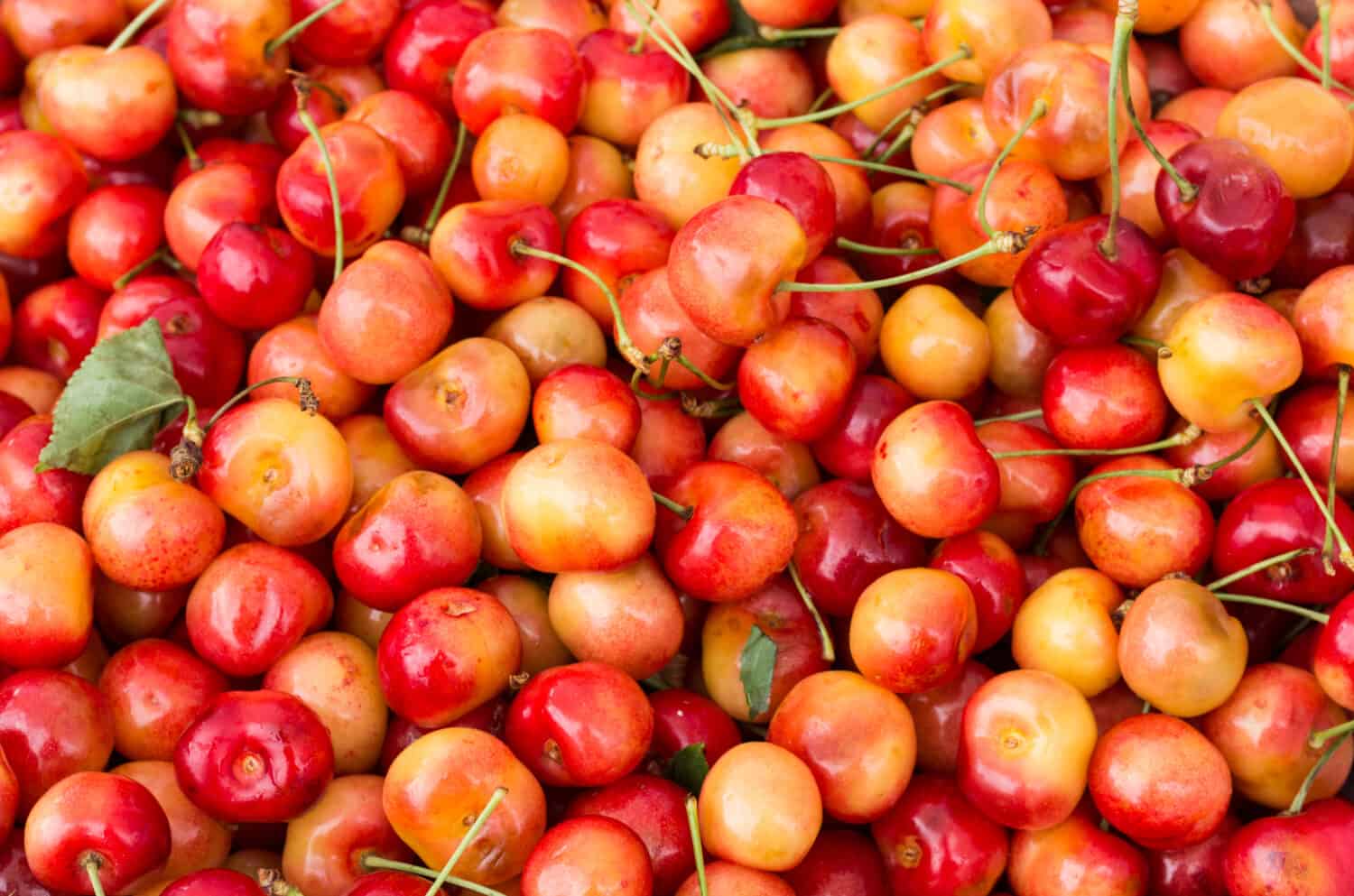
With a similar taste and appearance, the Queen Anna Cherry is commonly confused with the Rainier Cherry.
©Zigzag Mountain Art/Shutterstock.com
Queen Anne Cherries (Prunus avium) has multiple names, including the Napolean Bigarreau, Royal Ann, or Royal Anne. These cherries originated from Turkey, growing near the Black Sea. However, the Greeks spread the fruit to the Roman Empire and England. Today, they have been brought overseas and can be found worldwide.
The Royal Anne Cherry grows from Royal Ann Cherry trees that flower and produce a cherry. The fruit is fleshy and is a yellow to light pink color. They are commonly confused with Rainier cherries due to their appearance and taste. In the modern day, the Queen Anne Cherry is often baked into pies, used as a jam, and much more due to its super sweet taste.
#2 Quenepa
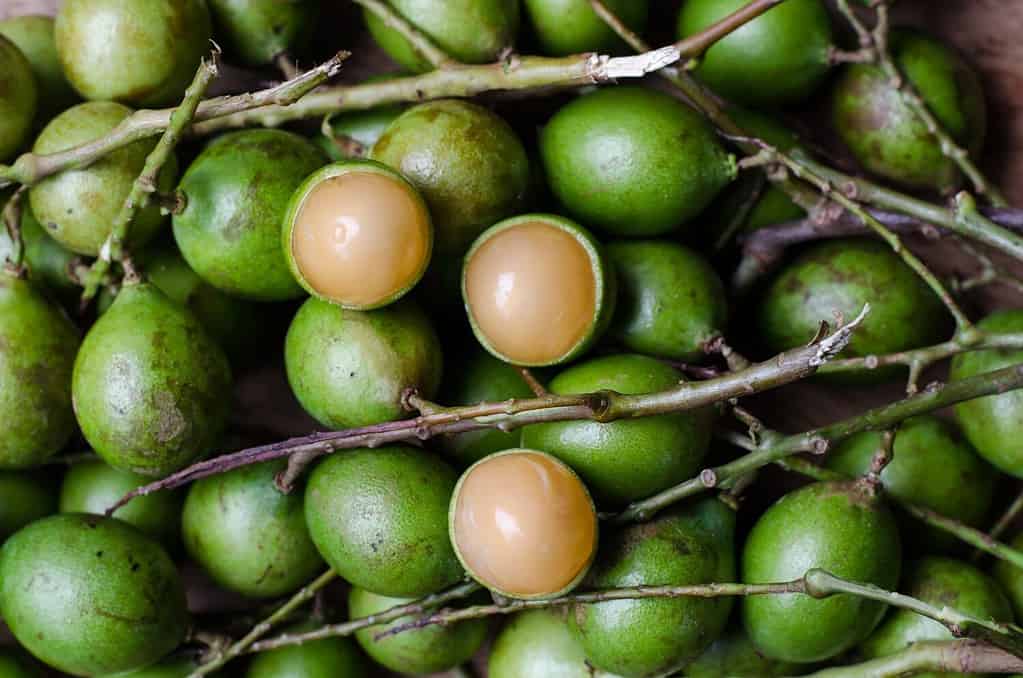
While the outside is a bitter rind, the inside is sour and features bittersweet notes.
©Mabelin Santos/Shutterstock.com
The Quenepa (Melicoccus bijugatus), also known as the Bajan ackee, Spanish lime, or Mamoncillo. It is part of the soapberry family Sapindaceae and is part of the Old World Tropics. The fruit is a delicacy found across South and Central America and some areas of the Caribbean. However, it was introduced to other areas such as India, Puerto Rico, etc.
Mainly, they can be found in the coastal and dry forest areas in Central America, Ponce, and the Caribbean. The Quenepa is round, with a green peel, and has an edible orange pulp. Tastewise is wine-like and flavored with some bittersweet notes. In Spanish culture, the Quenepa is used in a lot of songs, including “Suave” by Rene Perez, a rapper.
#3 Quince

Most cultures tend to use the Quince as an ornamental plant.
©darksoul72/Shutterstock.com
Quince (Cydonia oblonga) is part of the Cydonia in the Malinae of the Rosaceae family. The fruit can be found in the Hyrcanian forests in the Caspian Sea. Still, it can survive in multiple climates, even in Scotland. It is often confused with its Chinese counterpart, the Pseudocydonia sinensis.
A quince is yellow with fine white hairs. Mainly, the tree is used as an ornamental plant. However, it has been used to make marmalade, jam, paste, or alcoholic beverages. The seeds produce hydrogen cyanide, which can be toxic if eaten in large quantities.
#4 Quandong

Popular in desert regions, the Quandong is mainly found in Australia.
©mastersky/iStock via Getty Images
The Quandong (Santalum acuminatum) goes by names such as the desert quandong or native peach. It’s a part of the Santalaceae family and is mainly found in deserts in southern Australia. The fruit’s exterior is red or yellow, measuring 20 to 25 mm. A short 3 mm layer of shell encases the fruit that is hard to the touch. The quandong tastes sweet with a slightly sour and salty aftertaste. Many cultures like to use fruit as jams, preserves, sauces, relishes, juices, desserts, and ice cream.
#5 Quinault Strawberry
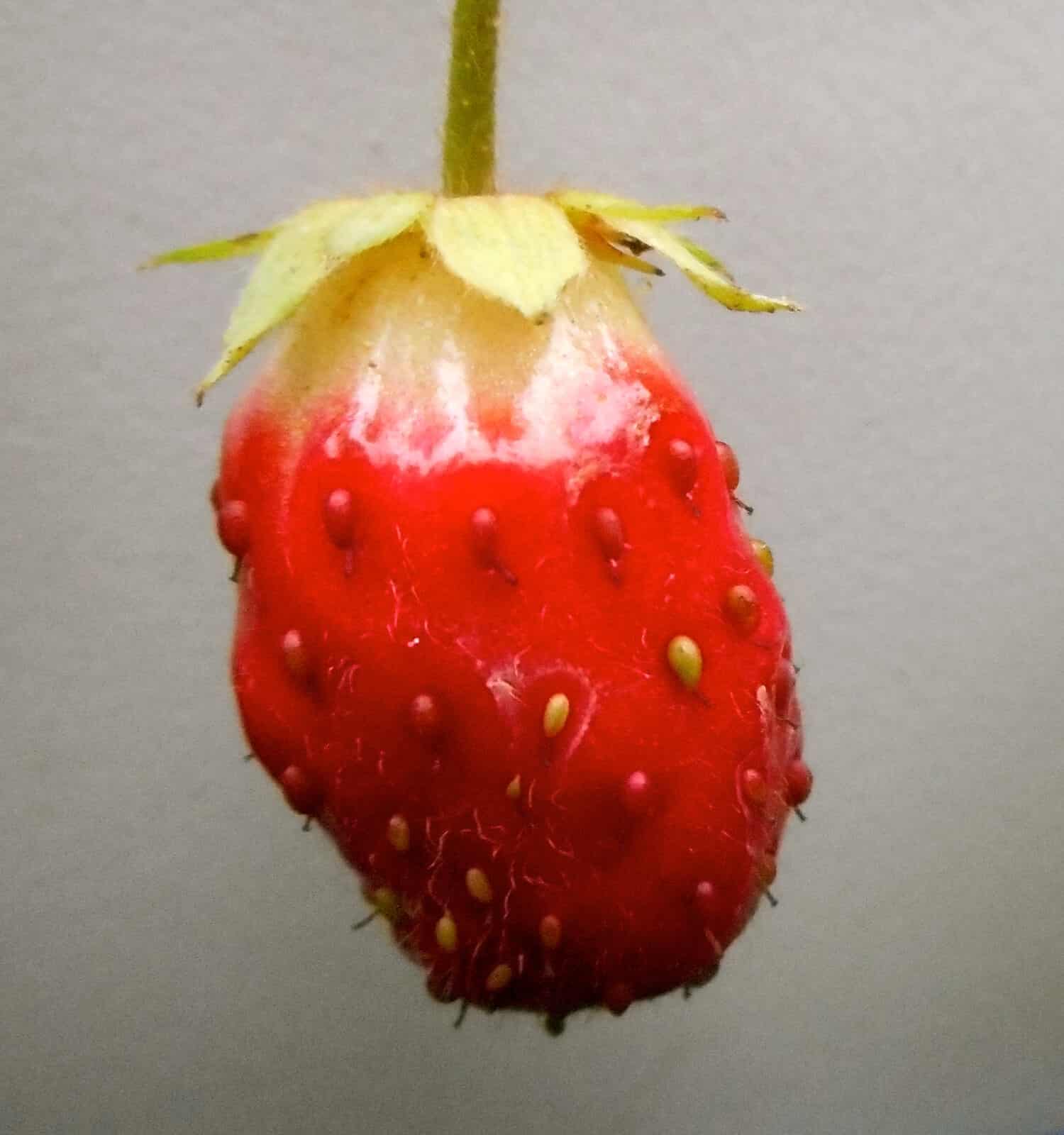
The Quinault strawberry is vibrant in color and sweet in taste, no matter the size.
©bkel/Shutterstock.com
The quinault strawberry (Fragaria ananassa) is also known as the everbearing strawberry and is a part of the Fragaria genus. Unlike other fruit varieties, the quinault strawberry was bred by Washington State University. The fruit is a popular choice for strawberries in the region, as they are known for their large size and sweet taste.
In terms of appearance, they look similar to standard strawberries and have a bright red exterior. Many people enjoy eating them fresh. However, they are also popular in desserts, preserves, and eating fresh due to their sweet aroma and taste.
#6 Querina Apple
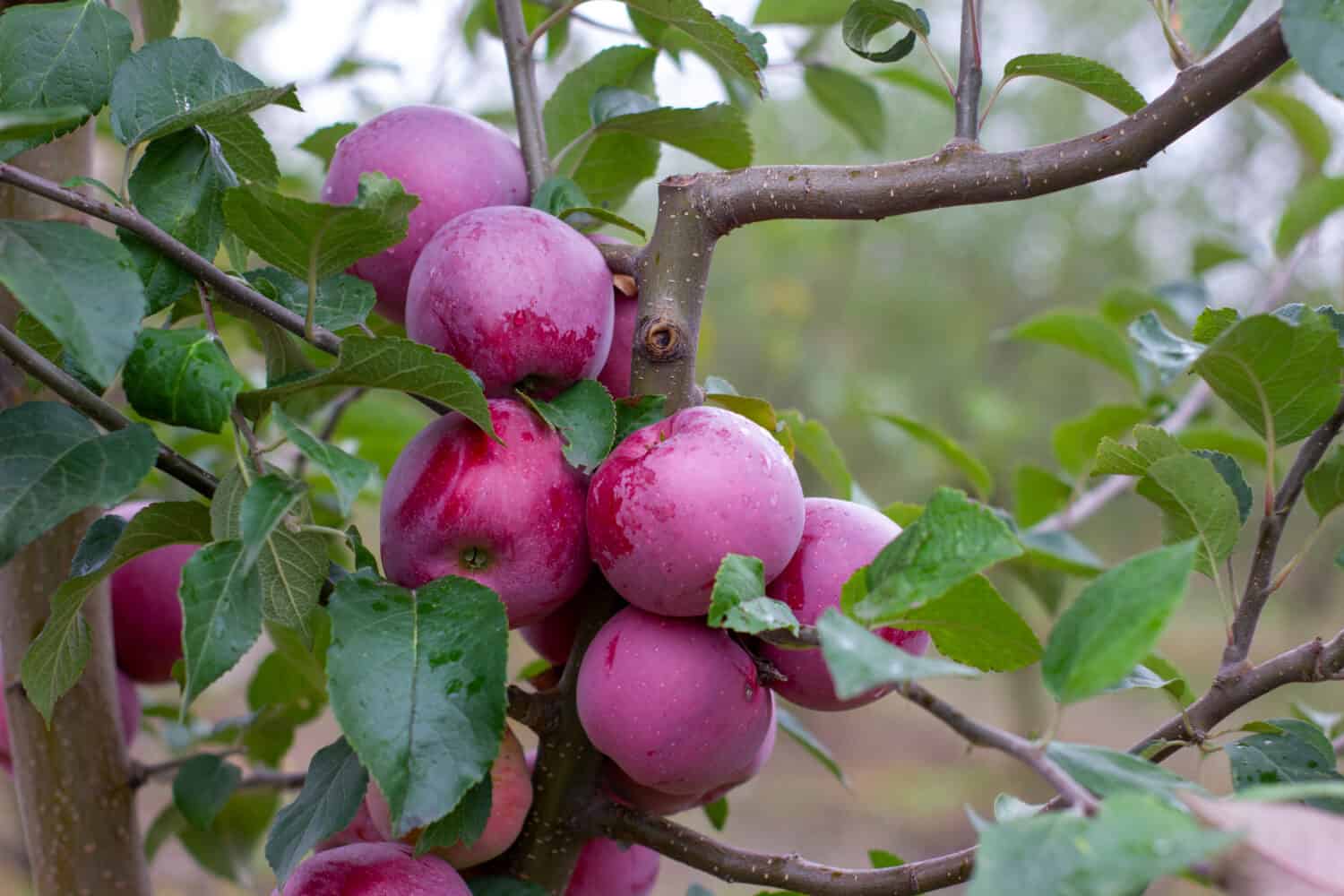
The Querina Apple is a mixture of three other types of apples.
©Malshak/Shutterstock.com
The Querina Apple (Malus pumila), the Florina, belongs to the Malus genus. The fruit originated in France and is a domesticated apple combined with the Jonathan, Golden Delicious, and Rome apples. Despite combining three apples, it appears red primarily with purple-red streaks on top of a yellow peel. The taste is a sweet-tart flavor with a firm flesh that is juicy. While they can be turned into desserts, they are mainly eaten fresh.
#7 Quararibea Cordata
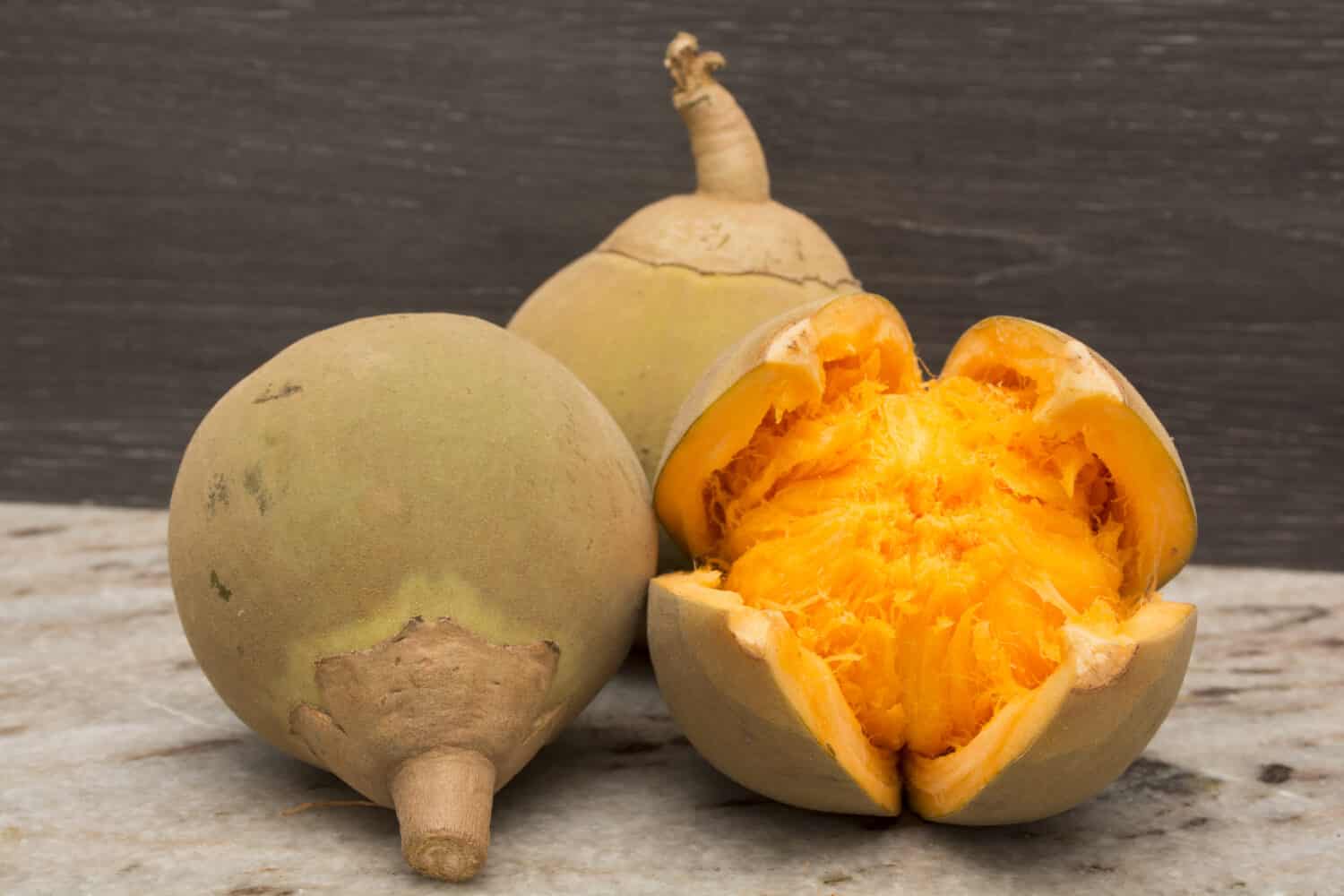
While it can be eaten, most countries prefer to use the Quararibea Cordata to cook or juice it.
©art samuel/Shutterstock.com
The Quararibea Cordata, also known as the South American sapote or chupa-chupa, is from the Malvaceae family. As you can expect, Quararibea Cordata can be found in the Amazon rainforest and Brazil, Ecuador, Colombia, and Peru.
Appearance-wise, the fruit has an orange-yellow color. In terms of taste, it’s soft, juicy, and said to have a sweet taste. In certain countries, it’s a popular choice to be made into juice. While the fruit is edible, the plant stocks can be used for doors and paneling and is a good choice for light boxes.
#8 Queen Tahiti Pineapples

Believe it or not, the Queen “Tahiti” Pineapple doesn’t originate from Tahiti.
©Temanu/Shutterstock.com
The Queen Tahiti Pineapples (Ananas comosus) are herbaceous perennials in the Bromeliaceae family. While the fruit might have “Tahiti” in its name, it doesn’t originate from there. Instead, it originated in Southern Brazil and Paraguay. Today, it can also be found in the Caribbean. Like your standard pineapple, the Queen Tahiti pineapple has a long cylindrical shape with serrated green leaves. The exterior is golden yellow and features green patches with bright yellow flesh. Tastewise, it’s sweet and juicy and has a strong fragrance.
#9 Queen Forelle Pear

Less popular today, the Queen Forelle Pear was famous during the 1600s.
©MemoSaBAM/Shutterstock.com
The Queen Forelle Pear (Pyrus communis) is a part of the Rosaceae family. The fruit is an older variety of pear and is thought to have originated from northern Saxony, Germany, in the 1600s. The Queen Forelle Pear has an elongated shape with a slight red flush. The taste is similar to other pears but sweeter. It’s crunchy, juicy, and is much firmer than other varieties. Many cultures use them as a garnish, in winter salads, or even turn them into savory soups.
#10 Quinoa
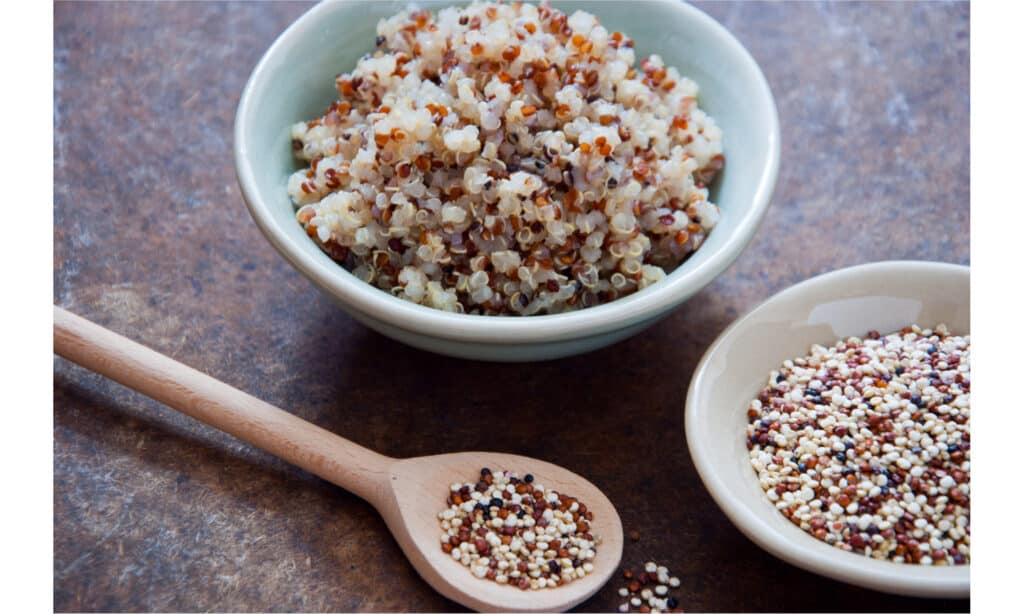
Quinoa is technically a fruit, even though many people believe it to be a grain.
©iStock.com/letterberry
The last fruit that starts with a q is Quinoa (Chenopodium quinoa). While it’s not technically seen as a fruit, it is one! Quinoa is a part of the amaranth family and is a form of edible seed. The seeds are tiny and look like millet or bird seed. However, they can come in a wide range of colors, including yellow, pink, and black. In terms of taste, quinoa has a nutty undertone and earthy aftertaste. Comparatively, it has a similar flavor profile as brown rice with a crunchier texture.
Summary of the 10 Fruits That Start with Q
| Number | Name |
|---|---|
| #1 | Queen Anne Cherries |
| #2 | Quenepa |
| #3 | Quince |
| #4 | Quandong |
| #5 | Quinault Strawberry |
| #6 | Querina Apple |
| #7 | Quararibea Cordata |
| #8 | Queen Tahiti Pineapples |
| #9 | Queen Forelle Pear |
| #10 | Quinoa |
The photo featured at the top of this post is © Fotos593/Shutterstock.com
Thank you for reading! Have some feedback for us? Contact the AZ Animals editorial team.







